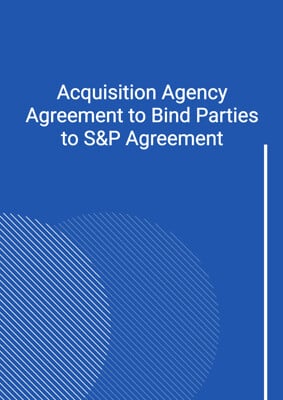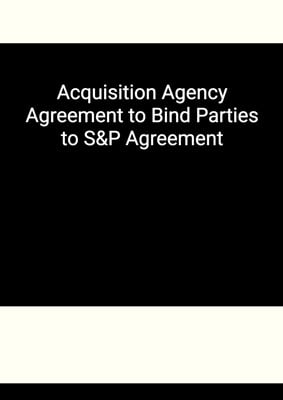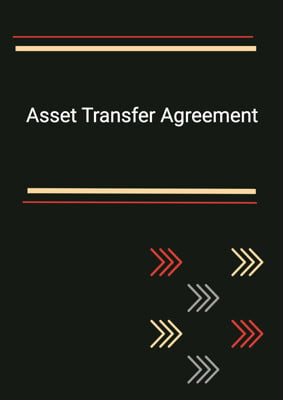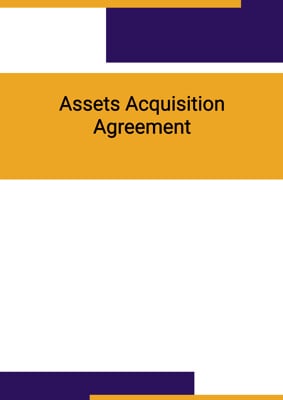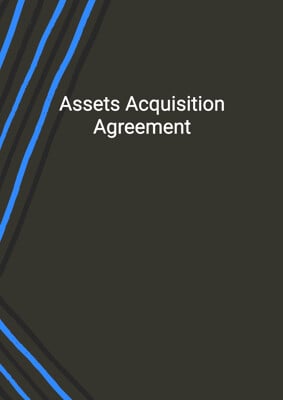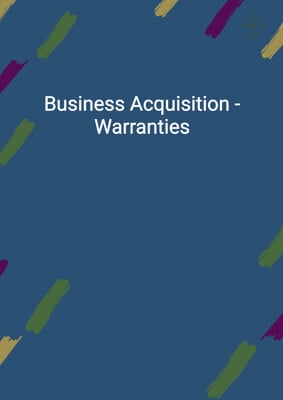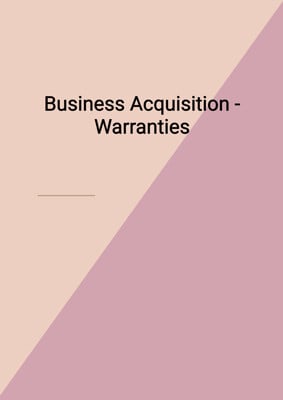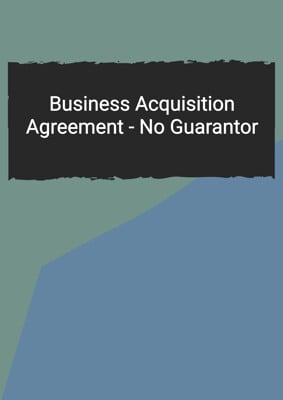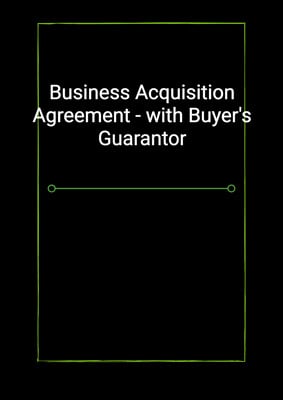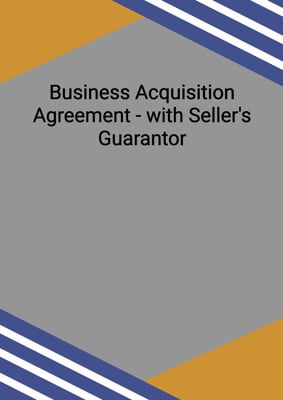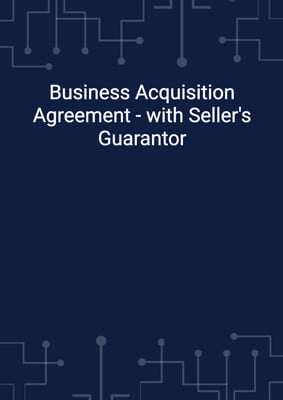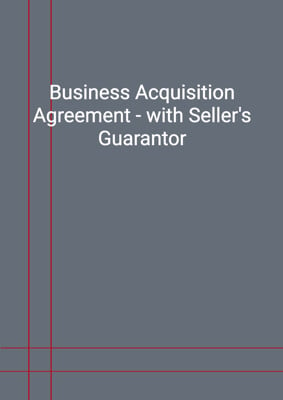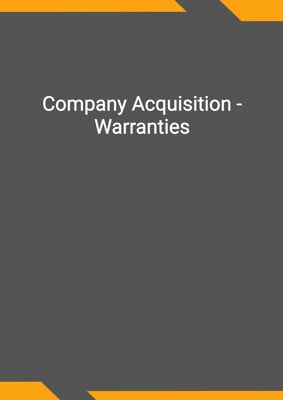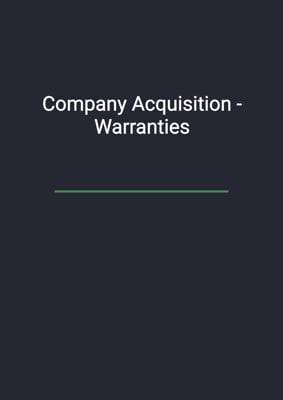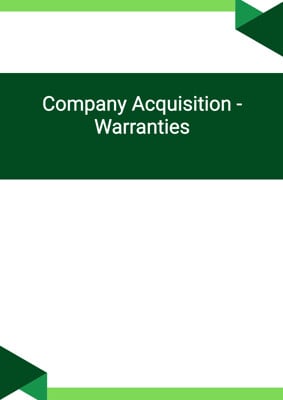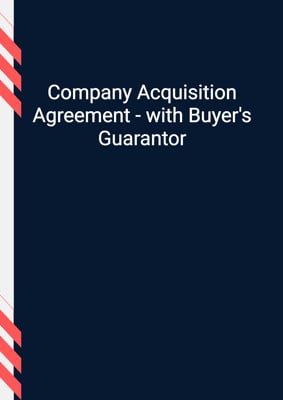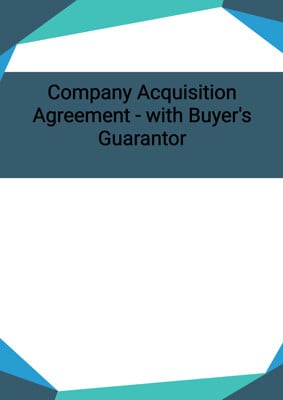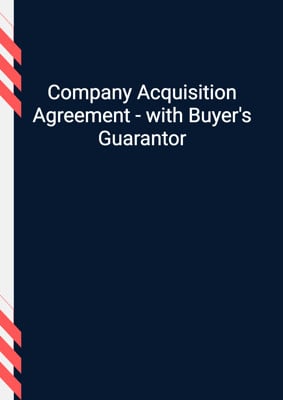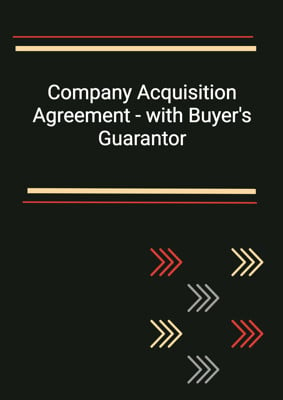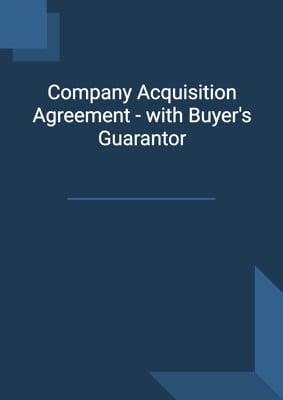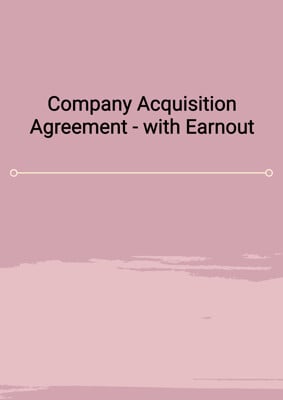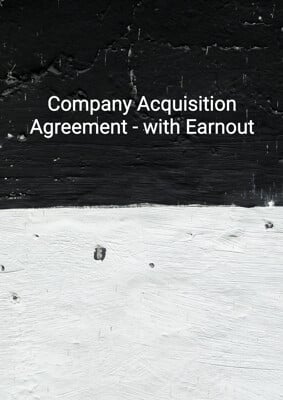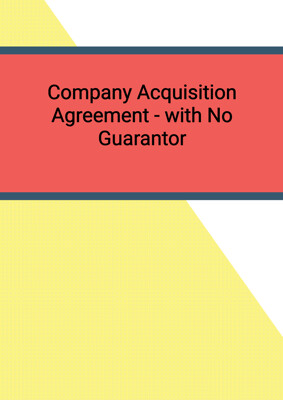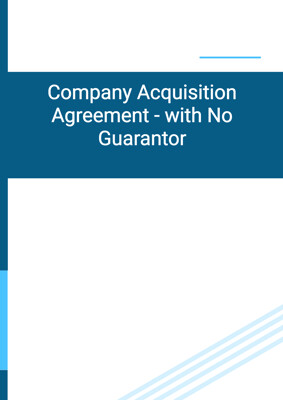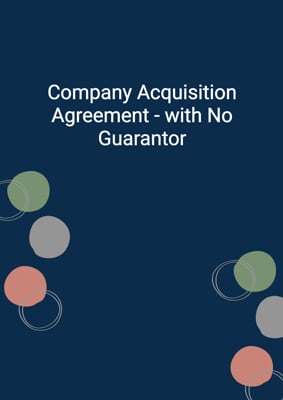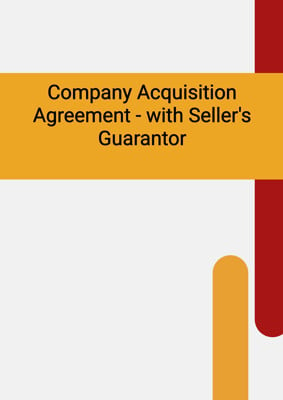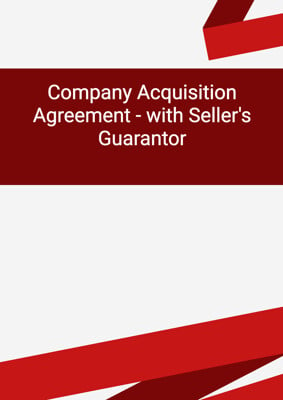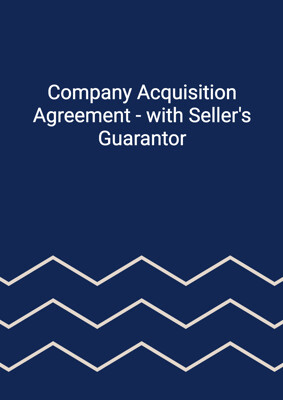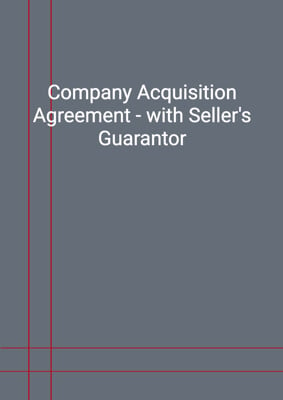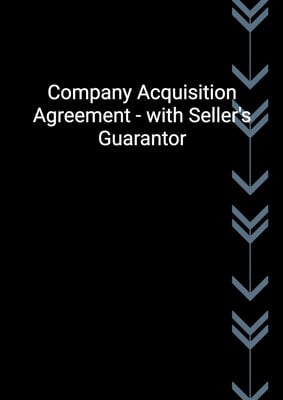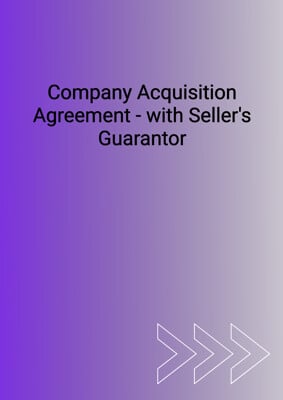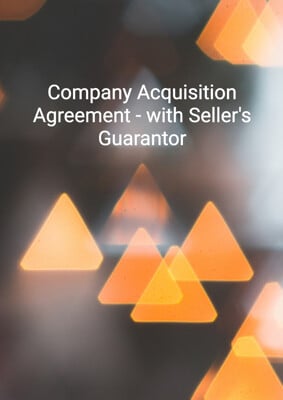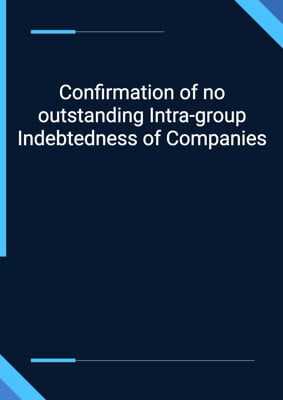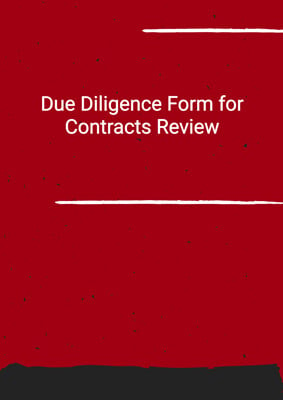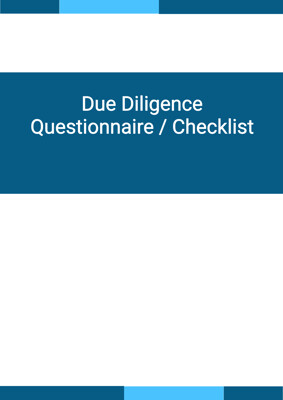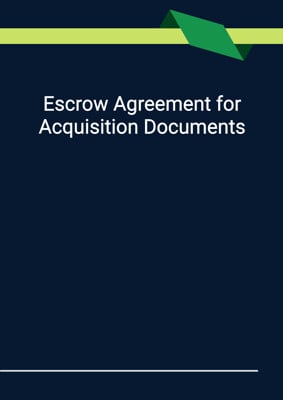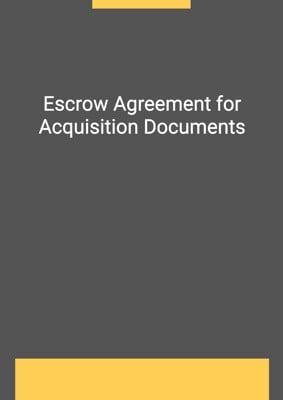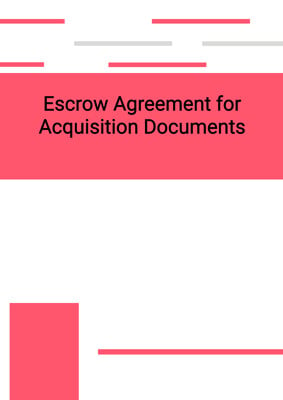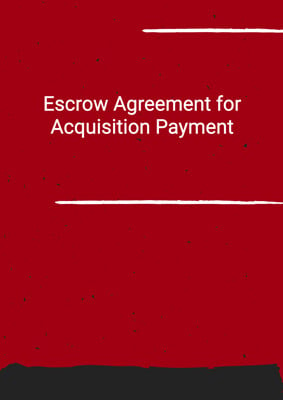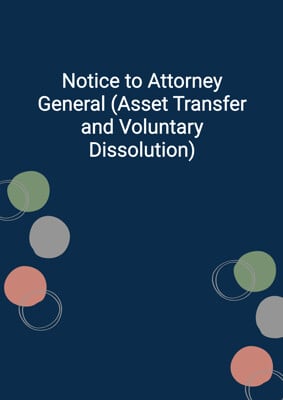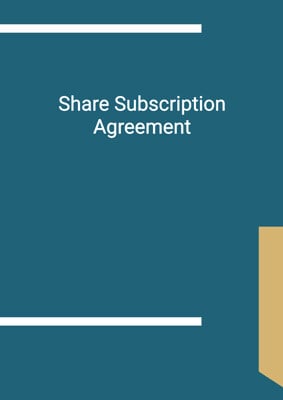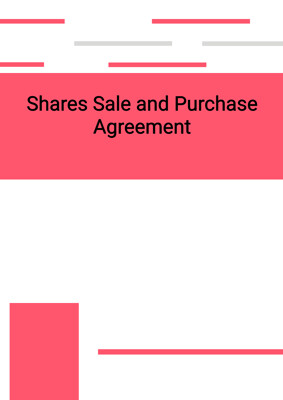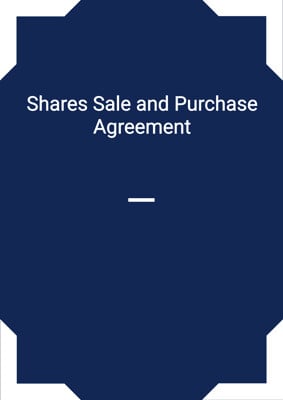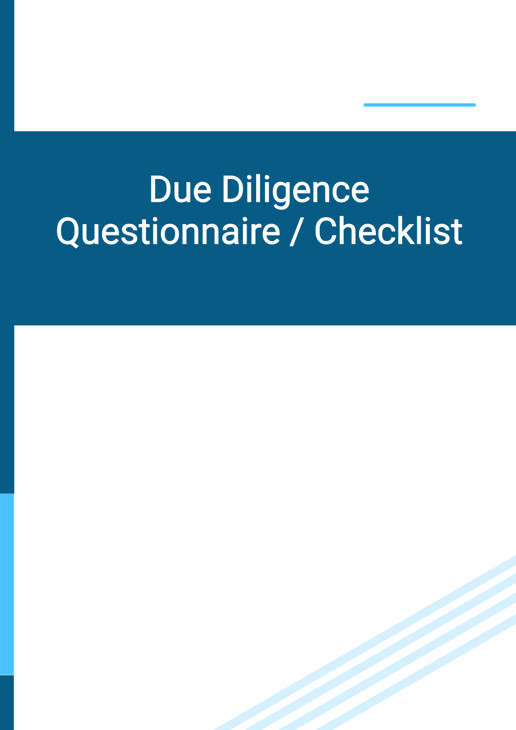
Due Diligence Questionnaire / Checklist
Business Acquisition
Due Diligence Questionnaire / Checklist from a Buyer to the Seller in relation to the acquisition of a business / business assets. The Seller will prepare a data room for the Buyer in accordance to the documents required in the Questionnaire.
How to Tailor the Document for Your Need?
01
Create Document
Click "Create Document" button and the document will be prepared with your account details automatically filled in.
02
Fill Information
Please fill in any additional information by following the step-by-step guide on the left hand side of the preview document and click the "Next" button.
03
Get Document
When you are done, click the "Get Document" button and you can download the document in Word or PDF format.
04
Review Document
Please review the document carefully and make any final modifications to ensure that the details are correct before publication / distribution.
Document Preview
Document Description
The document titled 'Due Diligence Questionnaire / Checklist' is a comprehensive questionnaire designed to gather information and documents necessary for conducting due diligence in relation to a proposed acquisition or investment in a business. The questionnaire covers various aspects of the business, including its assets, financials, taxes, assets, debts, compliance and regulatory review, claims and litigation, insurance, operations, competition, contracts, intellectual property rights, information technology and data protection, directors and employees, connected transactions, bank accounts, professional services, investments, products or services under development, environmental issues, and media and publicity.
The questionnaire begins with a brief introduction explaining its purpose and clarifying that the requested information is not exhaustive. It emphasizes that the information provided in the questionnaire is not a substitute for the standard warranties and indemnities to be given to the buyer.
The questionnaire is divided into multiple sections, each focusing on a specific aspect of the business. In the 'Business Assets' section, the questionnaire requests the identification of the main assets comprised in the business, such as customer contracts, trade debts, employees, plants and equipment, IP, IT systems, and property. It also asks for a list of assets to be acquired and their location, as well as a list of assets used in the business that will be excluded from the acquisition.
The 'Financials' section seeks information about the business's auditors, audited accounts, financial statements, directors' reports, accounting policies and principles, financial statements (including management accounts), liabilities, capital expenditures, budgets, financial projections, and more.
The 'Taxes' section focuses on details of tax filings, assessments, payments, registrations, audits, confirmations, and any applicable regulations or agreements related to tax treatment.
The 'Assets' section covers properties, encumbrances, and other assets such as plants, equipment, machinery, and fixed assets. It requests details of properties used or occupied by the business, interests in those properties, mortgages, charges, valuations, and compliance with government authorities. It also asks for information about other encumbrances on the assets and details of other assets used in the business.
The 'Debts' section seeks details of debts owed by the business, potential write-downs, credit terms, principal debtors, arrangements with bankers, and loans or facilities provided by creditors.
The 'Compliance and Regulatory Review' section focuses on licenses, permits, authorizations, registrations, consents, proceedings, minutes of board meetings, and compliance with privacy and data protection issues.
The 'Claims and Litigation' section requests details of breaches of contracts, warranty claims, complaints, litigation, disputes, investigations, injunctions, and judgments involving the business.
The 'Insurance' section seeks information about insurance policies, claims history, premium payments, assignments, and any other relevant insurance-related details.
The 'Operations' section covers revenues, production targets, expansion plans, strategic relationships, customers, suppliers, commission payments, agency contracts, marketing strategies, import and export activities, government incentives, and complaints management.
The 'Competition' section requests a description of the competitive landscape, details of competitors, and any investigations by anti-trust or competition authorities.
The 'Contracts' section seeks copies of standard terms and conditions, contracts for hire or rent, purchase contracts with retention of title provisions, guarantees, indemnities, and any other material contracts or arrangements.
The 'Intellectual Property Rights' section focuses on intellectual property owned or used by the business, including patents, copyrights, trademarks, service marks, registered designs, domain names, trade secrets, and technology transfer agreements.
The 'Information Technology and Data Protection' section requests details of the IT system used by the business, IT strategic plans, job descriptions, staffing levels, consultants, compliance with privacy and data protection laws, and any customers in the EU.
The 'Directors and Employees' section seeks information about senior management, directors, employees, employment contracts, terms of employment, employee benefit schemes, redundancy policies, labor disputes, and internal regulations.
The 'Connected Transactions' section focuses on loans, guarantees, and transfers of assets or properties between the business and its subsidiaries, directors, or state-owned entities.
The 'Bank Accounts' section requests details of all bank accounts maintained by the business, including names of banks, authorized signatories, signing instructions, and copies of bank statements.
The 'Professional Services' section seeks a schedule of law firms, accounting firms, consulting firms, and similar professionals engaged by the business.
The 'Investments' section covers details of investments made by the business, including types of investments, percentage of interest held, names of companies, amounts invested, and dates of investments.
The 'Products or Services Under Development' section requests a list of existing products or services and those under development, along with related correspondence, reports, and test results.
The 'Environmental Issues' section focuses on environmental laws, audits, hazardous substances, permits, litigation, renovations, compliance plans, and any environmental-related costs or liabilities.
The 'Media and Publicity' section seeks copies of articles, publicity campaigns, interviews, and press releases related to the business.
The 'General' section requests confirmation of no appointment of receivers or administrators, winding-up resolutions or petitions, steps taken for appointment of an administrator, and any other significant documents or information related to the business.
Overall, the questionnaire provides a comprehensive framework for conducting due diligence by covering all essential aspects of the business and requesting detailed information and documents.
How to use this document?
To effectively use the 'Due Diligence Questionnaire / Checklist' document, follow the step-by-step guidance below:
1. Review the questionnaire: Familiarize yourself with the structure and content of the questionnaire to understand the information and documents required for due diligence.
2. Gather relevant information: Collect all necessary information and documents related to the various sections of the questionnaire, ensuring that they are accurate and up to date.
3. Complete the questionnaire: Fill in the questionnaire by providing detailed and comprehensive responses to each question or request for information. Ensure that all sections are completed thoroughly.
4. Organize supporting documents: Attach copies of relevant documents, such as audited accounts, financial statements, contracts, licenses, permits, and any other requested materials, to the questionnaire.
5. Verify completeness: Double-check the completed questionnaire and attached documents to ensure that all required information has been provided.
6. Conduct a review: Review the completed questionnaire and documents to identify any gaps or areas that require further clarification or investigation.
7. Seek professional advice: If necessary, consult legal, financial, or other relevant professionals to ensure a thorough and accurate assessment of the business.
8. Analyze the findings: Analyze the gathered information and documents to assess the business's strengths, weaknesses, risks, and opportunities.
9. Prepare a due diligence report: Based on the findings, prepare a comprehensive due diligence report that highlights key findings, potential risks, and recommendations.
10. Use the report for decision-making: Utilize the due diligence report to make informed decisions regarding the proposed acquisition or investment in the business, considering the identified risks and opportunities.
Note: The guidance provided above is a general overview and should be adapted to the specific circumstances and requirements of the due diligence process.
Not the right document?
Don’t worry, we have thousands of documents for you to choose from:

